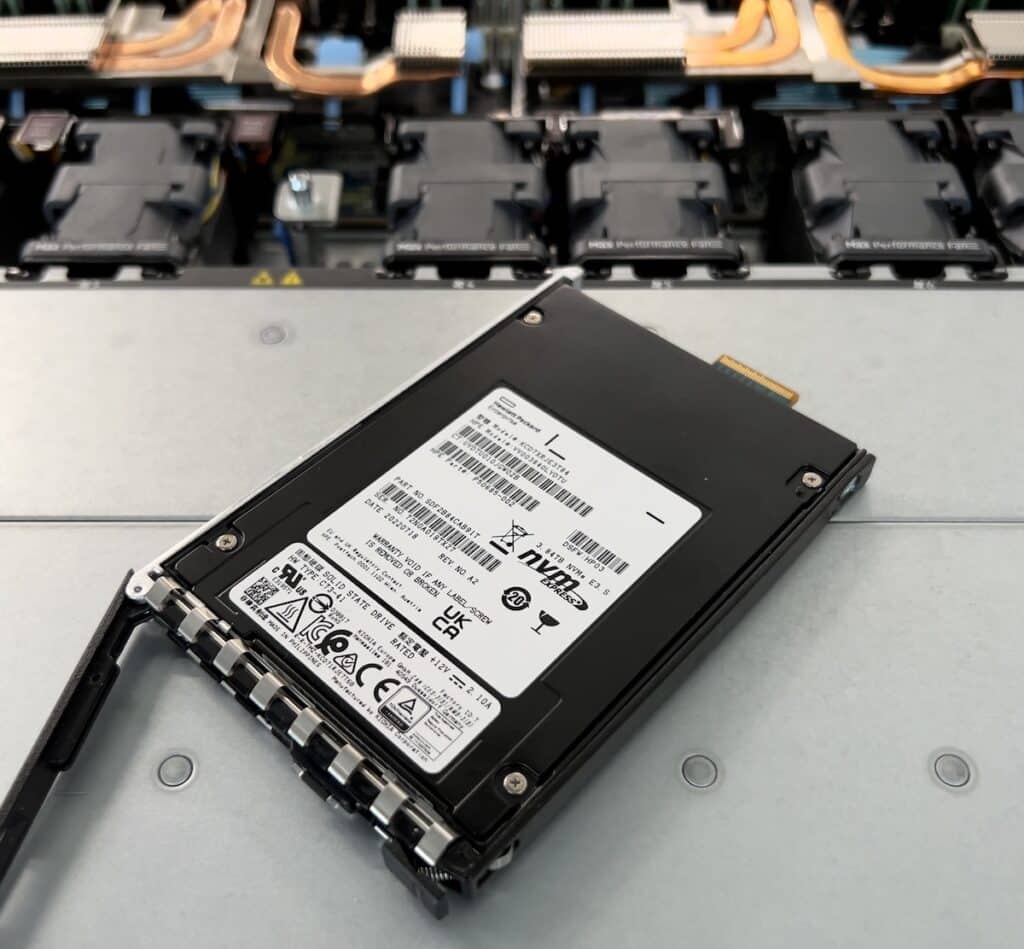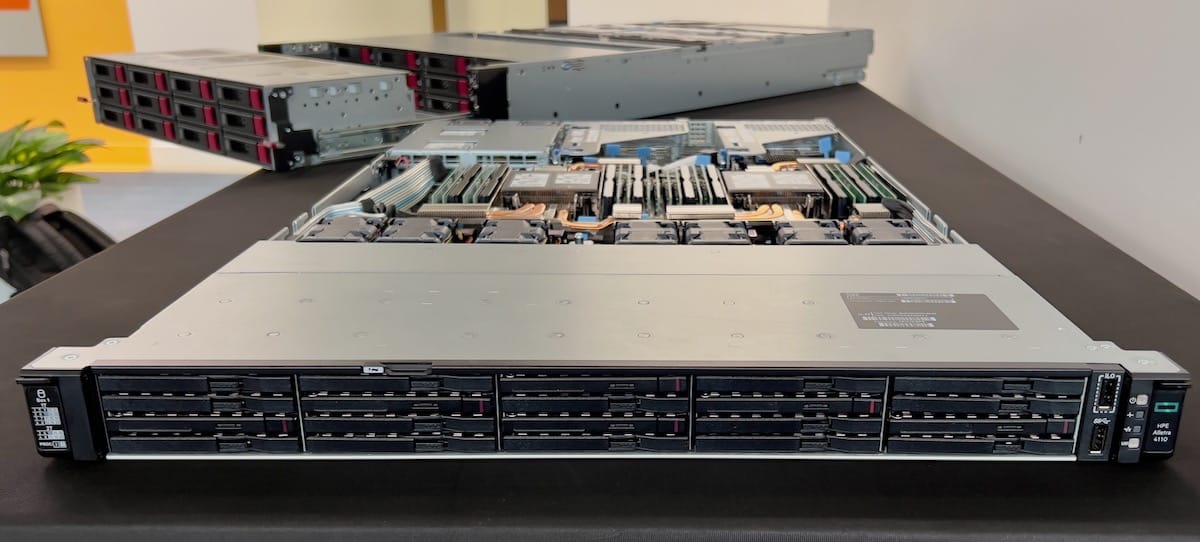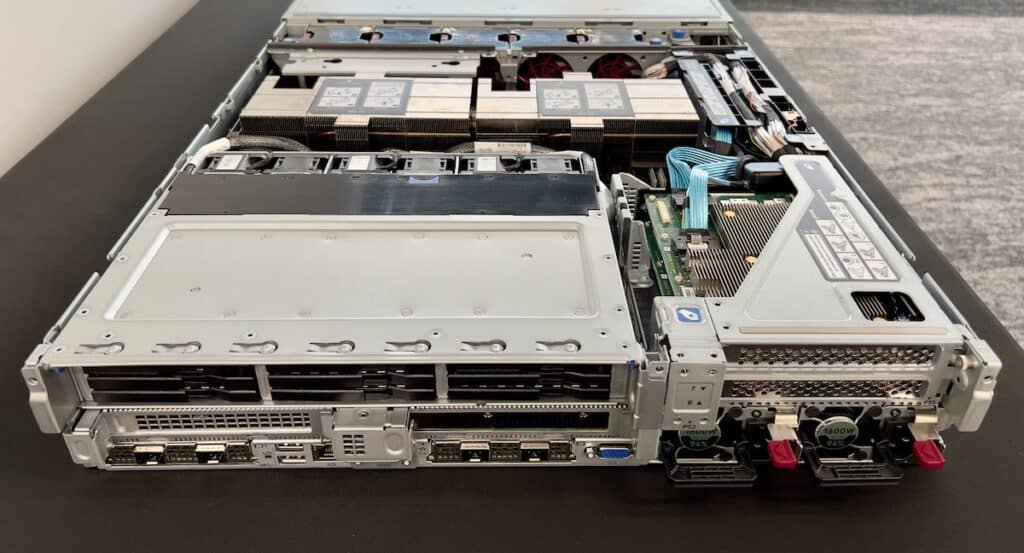As part of their ProLiant Gen11 server updates (Intel and AMD) and Alltetra storage server launches, HPE has been including more configurations that support Gen5 E3.S NVMe SSDs. We’ve seen the KIOXIA CD7 SSDs show up with HPE systems most recently at the GreenLake Storage Day. Now, KIOXIA and HPE have announced official support for the CD7 E3.S SSDs in select HPE servers.
As part of their ProLiant Gen11 server updates (Intel and AMD) and Alltetra storage server launches, HPE has been including more configurations that support Gen5 E3.S NVMe SSDs. We’ve seen the KIOXIA CD7 SSDs show up with HPE systems most recently at the GreenLake Storage Day. Now, KIOXIA and HPE have announced official support for the CD7 E3.S SSDs in select HPE servers.

KIOXIA CD7
The KIOXIA CD7 E3.S form factor SSD is designed specifically for data centers and is optimized for mainstream, read-intensive workloads. With a PCIe 5.0 interface, these SSDs offer consistent performance with up to 1,050K IOPS for random reads and 180K IOPS for random writes. They have an active power consumption range of 13-19W, depending on capacity.
The CD7 comes in three capacities, 1.92TB, 3.84TB, and 7.68TB. The SSDs are equipped with KIOXIA 96-layer BiCS FLASH 3D TLC NAND and carry an endurance rating of 1 DWPD, which is more than sufficient for almost all but the most write-intensive workloads.
HPE and E3.S SSDs
HPE’s ProLiant Gen11 servers, HPE Alletra 4000 data storage servers, and HPE Synergy 480 Gen11 Compute Module incorporate the PCIe 5.0 interface, resulting in enhanced storage and I/O performance. Additionally, HPE offers these servers with a variety of EDSFF E3.S drive bays, allowing organizations to configure extremely dense and flexible servers.
The Alletra 4110 and 4120 platforms launched earlier this year and take advantage of E3.S in very different ways. The Alletra 4110 is a 1U all-NVMe storage server that supports up to 20 E3.S SSDs. The Alletra 4120 is a 2U hybrid-NVMe storage server that supports up to 24 LFF drives in the front, 12 E3.S in the rear, or up to 48 SFF drives in the front with 12 E3.S in the rear.
As HPE Gen11 systems come to market, we’ll surely see more systems with E3.S slots. Most of the SSD innovation is around EDSFF form factors, while U.2/U.3 aren’t dead yet for NVMe SSDs, those slots are clearly going to be on the decline as EDSFF ramps up.
For HPE, the relationship with KIOXIA gives them a high-performance Gen5 SSD option. KIOXIA clearly has a very good head start on Gen5 and customers will definitely notice the uptick over Gen4.
View this post on Instagram
Engage with StorageReview
Newsletter | YouTube | Podcast iTunes/Spotify | Instagram | Twitter | TikTok | Discord | RSS Feed


